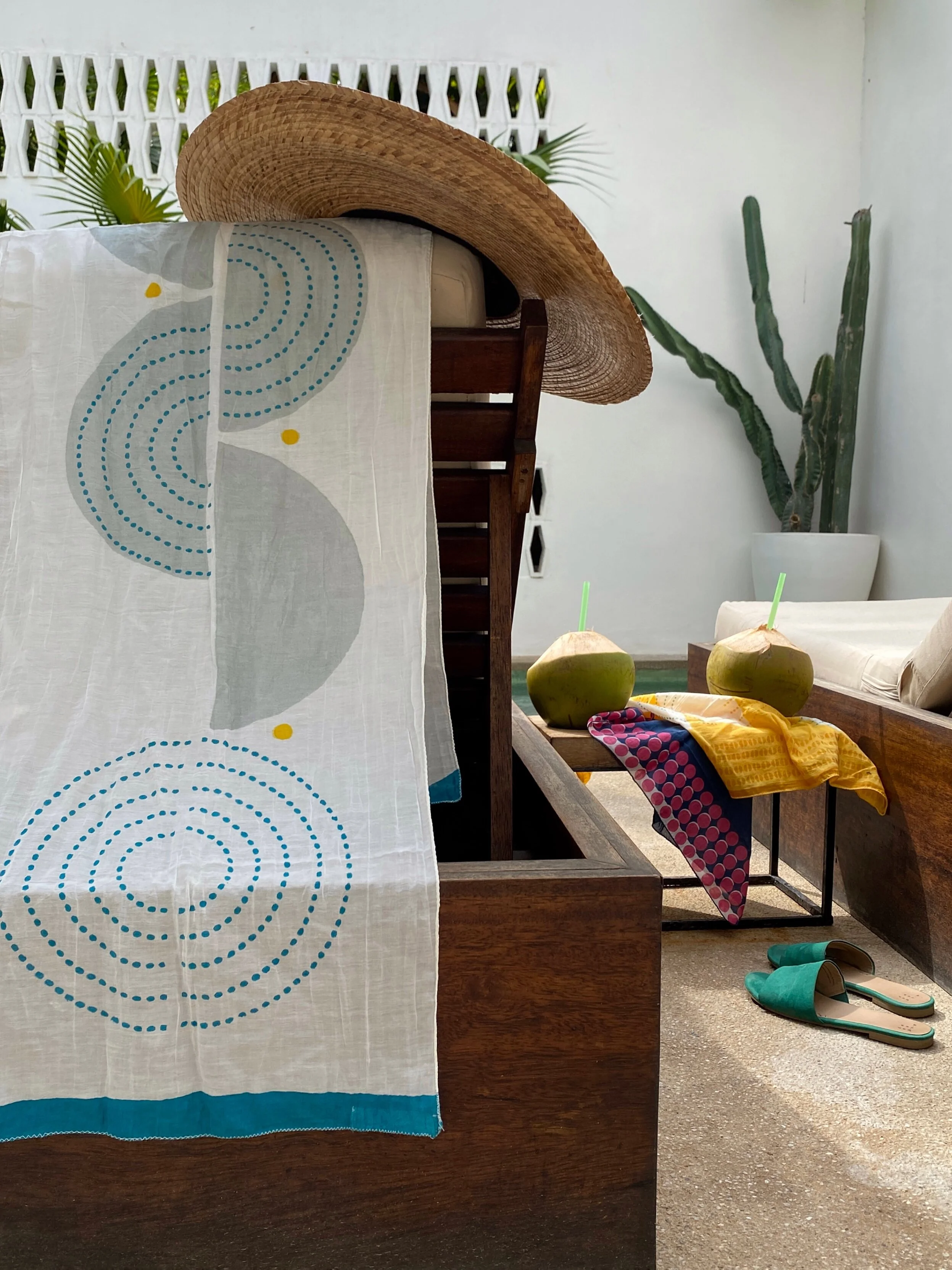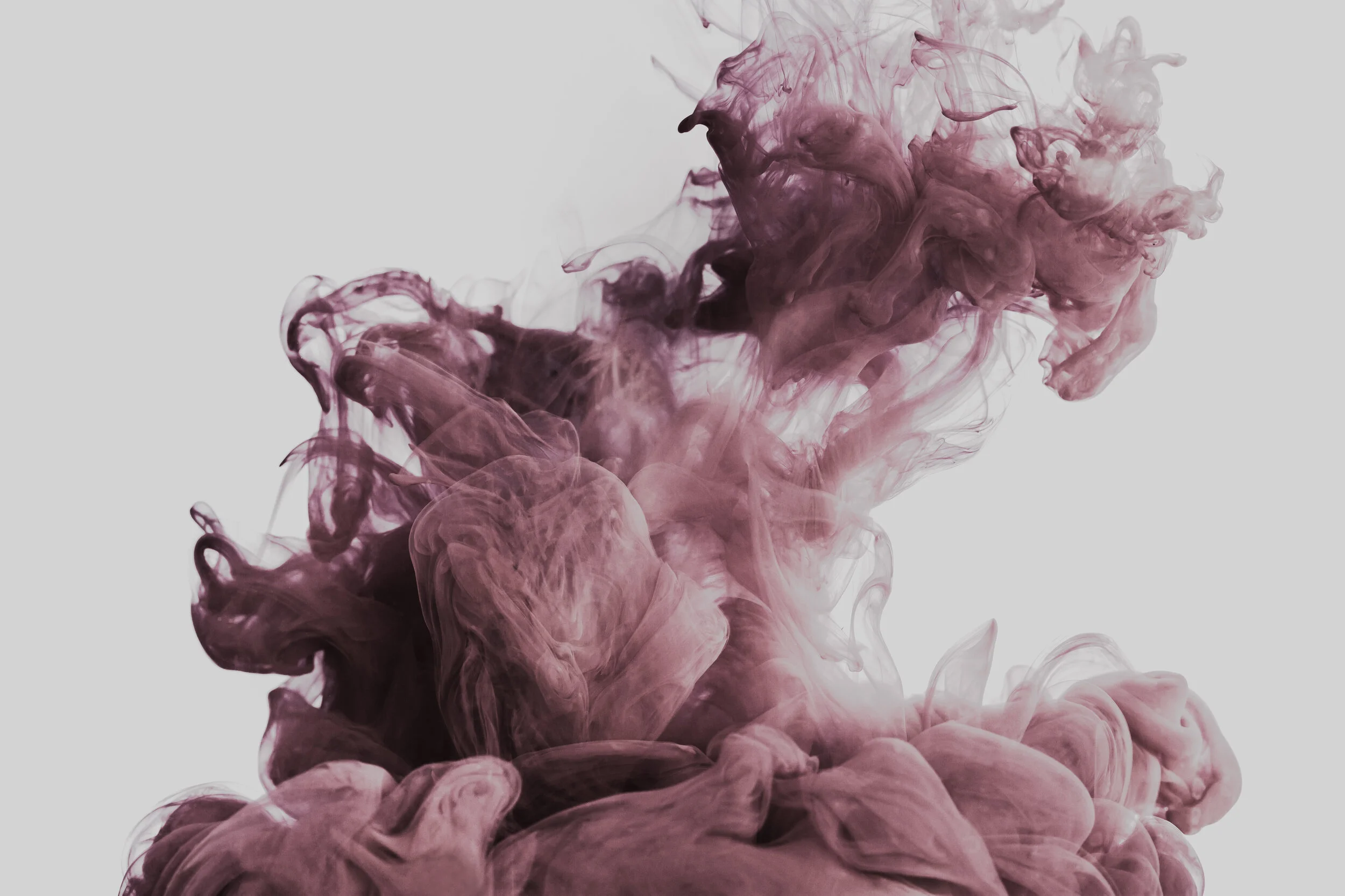On Decolonizing Design with Sofiya Deva of This Same Sky
The founder of This Same Sky, Sofiya Deva, reached out to me at the end of last year about a collaboration. We’ve been talking for months and have a couple of projects coming, but I’m thrilled to start with this conversation piece between she and I.
“...we wanted to tap into the reservoirs and resilience of traditional knowledge, and offer those depths as a balm for the frenzied consumerism that drives fast fashion. ”
Katie: Before we get into the good stuff, will you share a little more about the brand?
Sofiya: This Same Sky is a design house and social enterprise dedicated to creating a path to market for multigenerational artisans around the world. We launched mid-pandemic with a line of hand-printed scarves and robes out of Jaipur, India, and every piece we make carries its own affirmation or intention, to inspire a mindful lifestyle. Our aesthetic is funky, femme and soulful, and our customers tend to be fashion-forward, independent thinkers with a global outlook.
Katie: Can you expand on how what you’re doing―your focus and intention on inspiring a mindful lifestyle―is inspired by the community and artisans working and collaborating with This Same Sky?
Sofiya: Our work is driven by a deep appreciation for the richness of handicrafts. When something is made by hand, the process is inherently a slower, more connected one. No two handcrafted items are the same, and the techniques and materials involved often reflect both a specific cultural heritage, and an intimate knowledge of the surrounding terrain and natural resources.
It’s very important to us to go beyond the use of “artisan” as a trendy buzzword and challenge ourselves to question what kind of knowledge is most valued and why. Artisans aren’t just skilled labor; they’re guardians of a tradition and lineage. If we undervalue that or overly commodify it, we lose something really special. It’s like the death of a language, or the extinction of a particular species. That said, I think it’s also important to innovate, adapt, and introduce new influences because the art is a living one and part of how it survives is thorough evolution. But, we do that with respect, fairness and curiosity.
Katie: “Artisans are guardians of traditions and lineage…” this is a beautiful statement. What are some of the traditions we are seeing through pattern and design throughout your collection?
Sofiya: Design isn’t always the first tool we think of when we think of fighting for social justice, but it’s an essential one because it has the power to re-inform what we value, hold sacred, and pass on. When we created The Intuition Series of scarves and the Dream Robes, we wanted to tap into the reservoirs and resilience of traditional knowledge, and offer those depths as a balm for the frenzied consumerism that drives fast fashion.
It wasn’t purely about preservation; it was about extending the bounds of inclusion through cross-cultural dialogue, and challenging Eurocentric views about what it means to be modern. We used bold, vibrant colors like marigold and magenta that reflected the diversity and culture of India, and brought in ancient symbols of change and transformation, like crescents, spirals and triangles, to inspire our customers to reconnect with their own distinct roots. Tantra Song, a collection of anonymous Tantric prints from Rajasthan, was also a big influence in the design process. The most validating point was when the artisans themselves adored the pieces and saw themselves in a fresh light through them.
“Fusion” isn’t always ethical or artful, but I’m a big believer that fusion done right, whether in food or fashion, allows us to rediscover the familiar, and enter into an intimate relationship with the “foreign.” It’s an antidote to other-ing narratives, and a testament to our shared love of creativity.
Katie: Thank you for clearly articulating such important perspectives. You and I chatted a while back about decolonizing design. What does this mean to you and why is it necessary?
Sofiya: There are several layers to it, but to me, the center of gravity is questioning what perspectives on the world are privileged, why, and at whose expense? Why are the weavings of the Akwete women of Nigeria seen as “craft” and the prints of Hermes seen as “design?” Why is Bauhaus seen as the birth of modern design for all when it’s so Eurocentric? Even going further, why do we see sustainability and regenerative agriculture as “innovations” rather than repackaged Indigenous knowledge?
Many of these distinctions are now being challenged, but the trouble is that the perspectives that have long been marginalized and displaced need to be pieced together, and often carry real gaps in transmission. Helping preserve artisan practices that have been passed down over multiple generations is our way of not only supporting the continuity of a rich heritage, but of ensuring that the voices and wisdom they represent are not crowded out, or rendered invisible.
Katie: Real gaps in transmission...can you explain this part further?
Sofiya: Great question. In the case of India, British rule really suppressed the artisan industry, in favor of imported British goods, and we’ve never quite recovered from it. More broadly speaking, the advent of industrialization, lack of funding and access to digital tools, and an increased premium on convenience in the marketplace, have also caused many artisan communities to lose their local livelihoods.
Artisan goods take longer to make, are sometimes more expensive, and certainly don’t fit into a trend-driven fast fashion model. This has led to seasoned craftsmen leaving their family businesses to work as laborers or vendors in busy urban hubs. It’s also led to breakdowns in transmission, as the younger generations don’t always see pursuing their family or village’s craft as a viable economic path. We’ve already lost a great deal of knowledge and know-how as a result. And the first step to recovering it is to revive a reverence for, and recognition of, these craft traditions’ value.
Not only are artisans the OGs of sustainable and slow fashion, they’re also the keepers of a cultural identity and way of life, one that we can learn a great deal from.
Katie: So when we talk about decolonizing design, there’s a lot of unpacking to do. How can consumers participate in this process, and support artisans and traditional design methods?
Sofiya: Yes, unpacking, reclaiming and ultimately, healing. I’d love for consumers to take a stand for a more soulful take on personal style. Stop chasing trends and start intentionally curating, so that what you wear, decorate with, and how you accessorize carry a story and a purpose that’s unique to you, and fair to its makers.
The next step is of course to support artisan brands, like ours, that are working to help preserve heritage crafts while providing exceptional wages. :) I’d also add that it can be quite powerful to simply begin asking, whose perspective does this aesthetic represent, and who does it benefit?
Design brokers belonging. It’s a kind of shorthand, and one of our big questions at This Same Sky is, “How can we restore a sense of diversity and justice to design?” Sometimes it’s as simple as questioning a common assumption, like why is minimalism the standard for modernity? Sometimes it’s asserting that cultural identity is intrinsically valuable and deserves a place of dignity within the marketplace.
Sometimes it’s diving into our own ancestry and tapping into it as a source of strength and awe.
We actually even have a brand poem that captures that sentiment, and invites our customers on that journey with us:
Make an offering of your longing.
Wherever you go, there you are.
Retrace your origins, again and again.
Until you uncover the geometry of the heart.
What secrets do you hold? What treasures have you inherited?
What myths, like exotic birds, follow you with their familiar cry?
Stay. Until you know their names.
Until you and I are part of this same sky.
“Not only are artisans the OGs of sustainable and slow fashion, they’re also the keepers of a cultural identity and way of life, one that we can learn a great deal from.”
Learn more and shop the brand at www.thissamesky.com.














